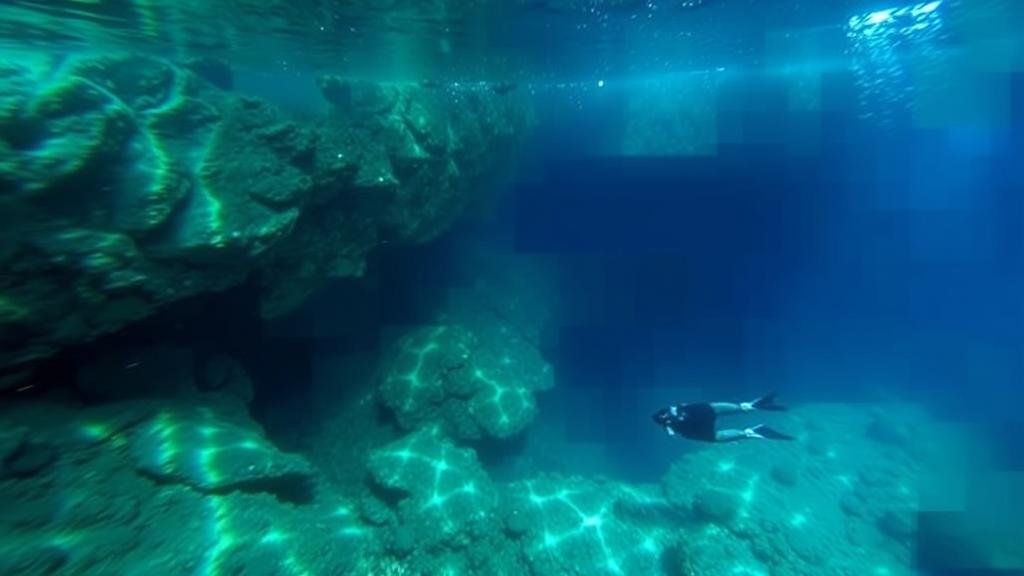How to Detect in Underwater Ravines and Trenches for Hidden Relics
Understanding Underwater Ravines and Trenches
Underwater ravines and trenches represent some of the most intriguing yet challenging environments for archaeologists and treasure hunters alike. These submerged landscapes can be rich in history, potentially concealing ancient artifacts, shipwrecks, and other relics. Detecting these items requires a combination of technology, methodology, and knowledge of underwater geography.
Geographical Features of Underwater Ravines
Underwater ravines are steep-sided valleys found on the seabed, often carved by the powerful forces of water erosion over millions of years. Trenches, on the other hand, are elongated depressions in the ocean floor, typically resulting from tectonic processes. Both features can create unique habitats and thus harbor a multitude of hidden relics.
- Ravines: These are generally deeper than their surrounding seabed, leading to potentially deeper sediment layers where artifacts may be buried.
- Trenches: Known for their extreme depths, trenches can contain materials that have been lost for centuries due to catastrophic events like shipwrecks.
Methods for Detecting Hidden Relics
The successful detection of hidden relics in underwater ravines and trenches involves employing an array of advanced technologies and methodologies. Below, we explore some of the most effective methods.
Sonar Technology
Sonar (Sound Navigation and Ranging) is a key technology used in underwater exploration. By sending sound waves from a vessel and measuring the time it takes for the echoes to return, sonar can create detailed maps of the ocean floor.
- Side-scan sonar: This specialized sonar system can detect anomalies and create images of underwater structures, helping researchers locate possible archaeological sites.
- Multi-beam sonar: This technology generates high-resolution three-dimensional images, useful for mapping complex underwater terrains.
For example, a team of marine archaeologists utilized multi-beam sonar technology in the Mediterranean Sea, which resulted in the discovery of a previously undocumented shipwreck, offering new insights into ancient maritime trade routes.
Remote Operated Vehicles (ROVs)
ROVs are unmanned, remotely controlled submarines equipped with cameras and sensors that allow for detailed inspection of underwater sites. They can be deployed in rugged terrains that are otherwise inaccessible.
A notable application of ROVs occurred during the excavation of the Titanic wreck site. Equipped with high-definition cameras, ROVs provided insights into the artifact distribution and environmental conditions around the wreck.
Analyzing Sediment Layers
Understanding the sediment layers in underwater ravines and trenches is critical for artifact recovery. e layers can provide context and dating information for artifacts found within them.
Importance of Sediment Composition
The composition of sediment can indicate past environmental conditions and help predict where certain types of relics may be found.
- Light sediments: Often found in river mouths; can conceal smaller artifacts and are easier to sift through.
- Heavy sediments: Found in deeper waters; may contain larger, heavier relics but are more challenging to excavate.
For example, during an excavation in the Black Sea, researchers discovered ancient shipwrecks preserved in an anoxic (low oxygen) environment, which halted degradation and allowed for the preservation of organic materials.
Legal and Ethical Considerations
As with any archaeological endeavor, detecting and recovering artifacts from underwater ravines and trenches comes with legal and ethical responsibilities.
International Law and Regulations
Various international laws govern underwater archaeological sites, including the UNESCO Convention on the Means of Prohibiting and Preventing the Illicit Import, Export, and Transfer of Ownership of Cultural Property.
- Permits: Always secure necessary permits from local and international authorities before conducting underwater surveys.
- Collaboration: Collaborate with local communities and stakeholders to ensure responsible excavation and preservation of historical artifacts.
Preservation of Findings
Artifacts discovered should be responsibly preserved and studied to contribute to the broader understanding of human history. Proper documentation, conservation measures, and outreach to the public are essential in this regard.
Actionable Takeaways
Detecting hidden relics in underwater ravines and trenches is both an art and a science. For those interested in this field, consider the following actionable steps:
- Familiarize yourself with sonar technology and its applications in marine archaeology.
- Stay abreast of legal requirements and ethical guidelines while engaging in underwater exploration.
- Understand sediment analysis as a crucial component of underwater archaeology.
By employing a blend of technology, methodological freedom, and ethical considerations, you can successfully explore the underwater landscape and uncover the hidden stories that lay beneath the surface.



